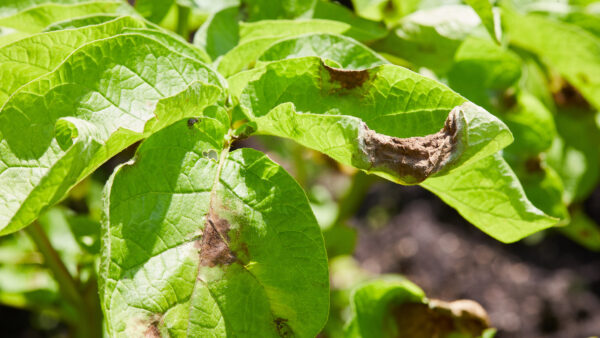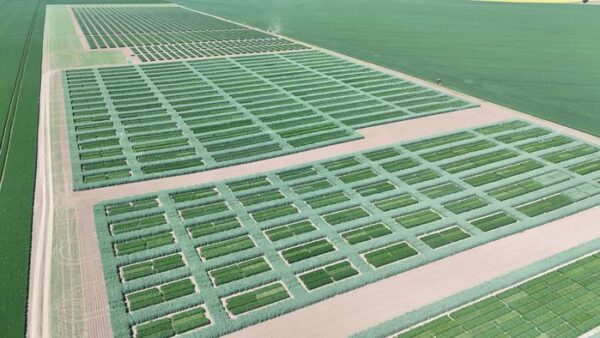Seed World Europe wishes you happy holidays. And while you’re having a great time with your families and friends over the holidays, there may be moments you’d like to take a break and escape with a bit of good reading. Check out our daily postings of content from the past year.
Editor’s Note: IP IS THE ENGINE OF INNOVATION. Intellectual Property is crucial to keep the cycle of innovation going. In times where the challenges are all around us, like a growing global population, climate change, changing diets, urbanization and many more, we need to employ every piece of innovation that we have, to mitigate those challenges. And new plant varieties are a key pillar in that. But these new varieties don’t just develop themselves. Breeders need an incentive to make those long term, upfront and risky investments into breeding better varieties. Plant Breeders Rights is one of those important systems to ensure that we can enjoy a steady flow of new, better, and locally adapted plant varieties reaching the global markets. Read this article to find out the myths on Plant Breeders’ Rights.
Myth: Plant Breeders’ Rights (PBR) in line with UPOV 1991 blocks farmers to use farm-saved seed
Fact: This needs to be clarified because it is incorrect. First of all, if farmers prefer to employ unprotected or old varieties and landraces, there are no restrictions on using farm-saved seed. For PBR protected varieties, according to European PBR laws for major crops including cereals, pulses, and oilseed rape, two circumstances must be taken into account if farmers intend to grow modern protected varieties: a) Farm-saved seed may be used without restrictions on the farms of small farmers who produce less than 92 tons of cereals or the equivalent in other crops; and b) Large farmers are permitted to use farm-saved seed on their own farms but must pay royalties to the variety’s breeder. Farmers and breeders must agree on the amount of the royalty, which cannot be less than 50 per cent of a commercial royalty.
The “farmer’s exception” is an important benefit sharing provision of UPOV 1991 that strikes a balance. As a customary practice, farmers can save, and reuse, farm saved seed. However, when they do so, they also should compensate the breeder, which encourages re-investment and continuous progress in breeding.
Myth: UPOV’91 only benefits large multinational corporations
Fact: In all nations, for all parties (e.g., public, private, producer, or partnerships), stronger breeder protection will encourage a favourable business environment for investments in plant breeding. And let’s not forget that in many countries, public institutions are the primary source of applications for agricultural crops (universities, federal and provincial government). And for them, an important source of revenue for these breeding efforts is the royalties they earn with their varieties, which can be reinvested. Furthermore, UPOV’91 based PBR protects the investments made by farmers and taxpayers in public breeding institutions.
Myth: Plant Breeders’ Rights will restrict access to heritage or heirloom varieties
Fact: A plant variety must be “new” to qualify for protection. By definition, heirloom and heritage varieties are “old” and do not meet the requirements for plant breeders’ rights. The plant variety becomes “public domain” once PBR expires. The varieties of today that are protected through plant breeders’ rights, include many of tomorrow’s heritage and heirloom types.
Up to the end of 2021, over 330,000 titles of protection had been granted in UPOV members. Only a little over 155,000 of those titles are currently still in force, and almost 188,000 titles have ceased to be in force, and the varieties are now freely available for farmers to use in the relevant countries.
In addition, often IP protection is surrendered by the breeder and becomes public domain well before the UPOV minimum 20 years of protection (25 years for trees and vines).
Myth: Varietal and genetic diversity is reduced by UPOV ’91
Fact: Stronger protection encourages innovation, and the breeder and research exemptions encourage the sharing and use of germplasm. The genetic and varietal diversity can even rise in countries with UPOV ’91. Numerous studies have demonstrated that the implementation of UPOV ’91 results in an increase in breeders, investment levels, the diversity of breeding activities (public vs. private, small, medium, and large producers, and public-private partnerships), the number and diversity of crop species, and the number of cultivars within a crop kind or species. Generally, a UPOV ’91 based PBR system will give breeders the confidence to release new, different, and innovative varieties into a marketplace, improving both varietal and genetic diversity.
For further reading, please see the UPOV Report on the Impact of Plant Variety Protection or the Symposium on the Benefits of Plant Variety Protection for Farmers and Growers (UPOV/SYM/GE/12).
Myth: Diversity is lost as a result of the need for stability and uniformity
Fact: For a breeders’ right to be granted, a variety must be sufficiently uniform, and stable. These characteristics are also sought after by most farmers and consumers.
The uniformity requirement makes certain that the variety can be defined to the extent necessary for the purpose of protection. The variety needs to be sufficiently uniform, indicating that the uniformity criterion does not seek absolute uniformity. The stability criterion, like the uniformity requirement, was created to ensure that the relevant characteristics of the variety remain unchanged after repeated propagation to establish the identity of the variety.
Diversity is not lost because of this. Rather the opposite, as the UPOV approach, promotes the breeding of novel plant varieties, and as such increased diversity. It encourages breeders to take risks and try new approaches. The “breeder’s exemption” in the UPOV Convention makes it possible for plant diversity to be used for future breeding activities, because any actions taken with the aim of breeding other varieties, are not subject to any restrictions by the breeder. This reflects the fact that having access to protected varieties supports the greatest advancements in plant breeding and, thus, maximizes the utilization of genetic resources for societal benefit.
Additionally, neither the application of laws and policies pertaining to the use of unprotected varieties nor the usage of unprotected varieties themselves are governed by the UPOV system.










